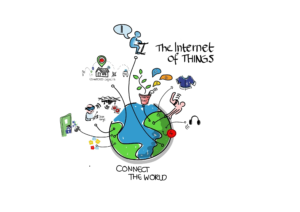The History of the Internet A Journey Through Its Growth and Impact

The history of the internet is a captivating journey through innovation, collaboration, and societal transformation. From its modest origins as a military research project to its present global reach, the internet has profoundly reshaped communication, commerce, and culture. This article delves into the multifaceted history of the internet, tracing its evolution from its early days to the present day and exploring its profound impact on various aspects of modern life. It will identify some of the key milestones, challenges, and developments along the way. The following sections will detail the key phases of the internet’s development, emphasizing its significant impact on communication and global interconnectedness. It also tackles how the early stages shaped the current internet landscape, covering everything from ARPANET to the World Wide Web.
1. The Genesis of the Internet: ARPANET and Early Development
1.1. The Seeds of Connectivity
The journey of the internet begins in the late 1960s with the development of ARPANET, a groundbreaking network connecting computers across the United States. ARPANET was established by the Advanced Research Projects Agency (ARPA), a US government agency. Driven by the need for reliable communication during a time of geopolitical tension, this pioneering initiative laid the groundwork for interconnected digital communication. Its design focused on robustness and resilience, anticipating the need for fault tolerance in a rapidly evolving technological landscape. This approach laid the foundation for many of the protocols and architectural principles still used in modern networking.
1.2. Protocols and Architecture
The development of communication protocols, such as TCP/IP, was crucial to the network’s success. These protocols defined how data could be transmitted reliably and efficiently across different networks. The layered architecture of TCP/IP enabled different systems to communicate seamlessly, despite inherent differences. This modular design facilitated rapid expansion and ensured interoperability, a key aspect of the internet’s future growth. The development of these protocols dramatically increased the efficiency and reliability of the communications infrastructure.
1.3. Expanding Beyond ARPANET
The ARPANET’s success spurred the development of other networks. The early 1970s saw the rise of other networks, including those from academic institutions and corporations, each using slightly different protocols. The need for interoperability became paramount. The subsequent evolution of the internet has seen it adapt to this demand for compatibility and scalability, making it a robust and resilient communication network.
2. The Birth of the World Wide Web and the Rise of the Internet
2.1. The Web's Genesis
In the 1980s, the concept of the World Wide Web began to take shape. Tim Berners-Lee, a British computer scientist, played a pivotal role in conceptualizing and developing this revolutionary technology. His innovation allowed for a seamless method of accessing and sharing information across different networks. The introduction of HTTP and HTML protocols made it possible to organize information in a structured and accessible way. This facilitated the exponential growth of online content.
3. The Internet's Explosion and Societal Impact
3.1. The Dawn of E-commerce
The late 1990s saw the emergence of e-commerce, drastically changing the way people shop and conduct business. The internet facilitated online transactions, creating a new global marketplace. This era witnessed the rise of major e-commerce platforms and significant economic shifts.
4. The Evolution of Internet Protocols and Technologies
4.1. Mobile Connectivity
The 21st century ushered in the era of mobile internet access. This accessibility transformed the way people interacted with the internet, facilitating instant connectivity and global communication. The rise of smartphones and mobile devices further fueled this connectivity, marking a significant shift from desktop-based internet use.
4.2. The Cloud Computing Revolution
Cloud computing revolutionized data storage and access. Data centers globally provide massive storage capabilities and processing power, allowing users to store and access information from anywhere in the world. This accessibility has fundamentally altered how businesses and individuals approach information management.
4.3. The Future of the Internet: Emerging Technologies
The internet is constantly evolving. Emerging technologies such as artificial intelligence, virtual reality, and blockchain are poised to further reshape the internet landscape. This constant evolution promises innovative applications and unexpected developments, driving further globalization of connectivity.
Related Post : Cloud Computing in 2024 Latest Advancements and Applications
5. The Internet's Impact on Culture and Society
5.1. Global Communication
The internet fundamentally altered communication patterns. The ability to connect with people across geographical boundaries fostered international cooperation, facilitated cultural exchange, and created new forms of social interaction. This global connectivity has profoundly influenced social movements and cultural trends.
5.2. The Digital Divide
Despite the incredible benefits, the internet’s widespread use has also revealed inequalities. The digital divide highlights the unequal access to technology and digital literacy, posing significant social challenges in bridging the gap and fostering digital inclusivity.
5.3. The Impact of Cybersecurity and Data Privacy
The increasing reliance on the internet has raised crucial concerns about cybersecurity and data privacy. As more sensitive information is exchanged online, robust security measures are necessary to safeguard user data. Ethical considerations about data collection, usage, and security need careful attention.
In conclusion, the history of the internet is a remarkable journey of innovation and collaboration. From its humble beginnings as a research project to its global ubiquity, the internet has transformed how we communicate, learn, work, and live. Its ongoing evolution promises further fascinating developments, and understanding its past is crucial for navigating its future. To continue exploring the dynamic world of the internet, I encourage you to delve deeper into its multifaceted evolution. Visit our website for more insightful articles and resources about internet history.
Share this content:














Post Comment